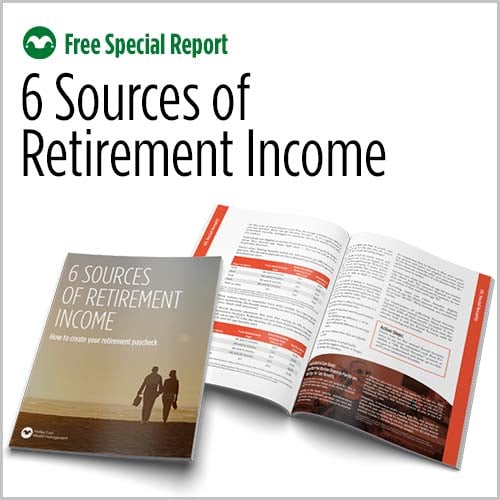

Many near-retirees become eligible for Social Security benefits while they’re still working. Should you start taking your benefits now? Or should you wait? Consider these factors and strategies to help maximize your income.
Published by Motley Fool Wealth Management Originally posted on Tue, Aug 6, 2024 Last updated on August 27, 2024
• Learn about unique investment solutions
• Increase the potential to obtain your financial goals
The short answer is: Yes, you can work while receiving Social Security benefits.
The long answer is: Yes, you can work while receiving Social Security benefits, but there are conditions and consequences you will need to understand to make the best choices for you and your family.
Eligibility for Social Security retirement benefits starts at age 62 for most of us, but most people will not get their full Social Security benefit at age 62. Your full Social Security benefit won’t kick in until you reach your Full Retirement Age (FRA).
FRA varies by birth year. Anyone born in 1957 or earlier has already reached their FRA. For those born in 1958 or later, their FRA is: 1
| Birth year | FRA |
|---|---|
| 1958 | 66 and 8 months |
| 1959 | 66 and 10 months |
| 1960 or later | 67 |
While reaching your FRA entitles you to your full benefit, waiting until age 70 to claim will maximize your initial and potential lifetime benefits. Between your FRA and age 70, your initial benefit level increases about 8% annually for each year that you delay. 2
If you’ve claimed your Social Security benefits before you've reached your FRA, and your earnings from employment or self-employment exceed the annual limit, then your benefit could be reduced.
Note that earnings from other, non-employment sources, including interest, dividends, capital gains, or a pension aren’t counted towards the earnings limit.
The Social Security earnings limit is updated every year. For 2024, the earnings limit is $22,320. For those people who are receiving their Social Security benefit and are younger than their FRA, their benefit will be reduced by $1 for every $2 of earned income above the earnings limit. 3
For example, if you had $100,000 of earned income, your Social Security benefit would be reduced by $38,840 on an annual basis, which equates to $3,236.67 less each month. This is calculated by taking the difference between $100,000 and $22,320, which is $77,680, and dividing it by 2 for the annual reduction, then dividing the annual reduction by 12 to get the monthly reduction.
This chart shows the amount of the benefit reduction at various levels of earned income.
| Earned income | Annual benefit reduction | Monthly benefit reduction |
|---|---|---|
| $20,000 | $0 | $0 |
| $25,000 | $1,340 | $111.67 |
| $50,000 | $13,840 | $1,153.33 |
| $65,000 | $21,340 | $1,778.33 |
| $80,000 | $28,840 | $2,403.33 |
| $100,000 | $38,840 | $3,236.67 |
| $150,000 | $63,840 | $5320.00 |
| $200,000 | $88,840 | $7,403.33 |
| $250,000 | $113,840 | $9,486.00 |
As you can see, the monthly benefit reduction can add up pretty quickly.
In the year that you will reach your FRA, there are two differences. First, the earnings limit increases (to $59,520 in 2024). The earnings reduction also decreases to a $1 reduction for every $3 in earned income above the limit. For example, someone with $100,000 in earned income during that year would see an annual benefit reduction of $13,493.33 and a monthly reduction of $1,124.44.
Once you pass your FRA, there are no restrictions on the amount of earned income you make, and there are no earnings limit reductions t o your Social Security benefit.
If your benefits are reduced due to exceeding the earnings limit, those benefits will be returned to you in the form of a higher benefit once you reach your full retirement age. This higher benefit will commence in January of the following year.
If your earnings during the years you receive Social Security are enough to fall inside your 35 highest earning years, then your benefit amount will be recalculated for each year that this is applicable.
Social Security offers a one-time “do over” if you change your mind about receiving your benefits after initially claiming them. You are able to withdraw your claim within the first 12 months of having your initial claim for benefits approved. 4
The process of withdrawing your benefit claim requires that all benefits received are paid back. This includes not only the Social Security benefits you received, but also any money withheld for Medicare premiums, taxes, garnishments plus any benefits received by family members as a result of your having claimed benefits. Additionally if any medical expenses were paid by Medicare Part A during this time period those expenses will need to be refunded to Medicare as well.
You can then reapply at a later date and your benefit will be based on your age and benefit level at the time you reapply.
Taxes are another angle to consider when working and drawing Social Security benefits. Social Security benefits can be subject to taxes based on your income and filing status.
The percentage of your benefit that may be subject to taxes is a function of your combined income, which is the sum of your adjusted gross income (AGI) plus any non-taxable interest income and one-half of your Social Security benefit. Note that your AGI is a function of all income received, not just income from employment or self-employment.
The level of taxation on Social Security works as follows: 5
Those who are married but file separately will generally pay taxes on their benefits.
People who are working, including working for themselves, often find that this portion of their income alone will push their combined income to a level where a portion of their Social Security benefits are taxable.
Continuing to work after you start receiving Social Security benefits can add to your future benefit levels — depending upon the amount you earn.
Your Social Security benefits are based on your 35 highest earnings years over the course of your working life. To the extent that your earnings from employment or self-employment (once you have claimed your Social Security benefit) fall into your top 35 earnings years, this can serve to increase your benefits in future years.
This is also true for people working longer into their 60s or 70s, regardless of when they claim their Social Security benefits.
With more people working later or phasing into retirement , the issue of how to balance working and drawing Social Security benefits is more prevalent than perhaps it has been in the past. There’s no one right answer — your life expectancy, your health, and your marital status will also come into play.
A knowledgeable financial advisor can help you work through the decision by modeling what your income and your taxes might look like, depending on when you claim your Social Security benefits and how much you believe you’ll be earning.
Schedule a 30-minute call with one of our Wealth Advisors and get a financial roadmap at no cost or obligation.
Schedule a Call


Join the thousands of readers getting stories like this delivered straight to their inbox every Thursday — for free. Give it a spin, enter your email to sign up.
Sources:
1 Social Security Administration, “ Retirement Benefits 2024 .” Accessed July 9, 2024..
2 Social Security Administration, “ When to Start Receiving Social Security Benefits. ” Accessed July 9, 2024.
3 Social Security Administration, “ Receiving Benefits While Working .” Accessed July 9, 2024.
5 Social Security - Income Taxes and Your Social Security Benefit https://www-origin.ssa.gov/benefits/retirement/planner/taxes.html (accessed 7/9/2024)

Let's see what we'd recommend for you. Create your Investor Profile online right now — for free. It's secure and only takes 10 minutes.

Schedule a 30-minute call with one of our Wealth Advisors and get a financial roadmap at no cost or obligation.

6 Sources of Retirement Income: Must-read tips and tricks we believe all retirees should know. Download your copy today – for free.

Tax planning doesn’t end with retirement. In fact, tax planning can be equally, if not more.

Even if you’re not working in retirement, you probably generate income and pay tax on it. How, you.

Americans who qualify for Social Security retirement benefits can start collecting their monthly.
This message is provided for informational purposes only, reflects our general views on investing and should not be relied upon as recommendations or financial planning advice. We encourage you to seek personalized advice from qualified professionals, including (without limitation) tax professionals, regarding all personal finance issues. While we can counsel on tax efficiency and general tax considerations, Motley Fool Wealth Management does not (and is not permitted to) provide tax or legal advice. Clients who need such advice should consult tax and legal professionals. This message may not be relied upon as personalized financial planning or tax advice.
The information contained herein is believed to be accurate and derived from sources believed to be reliable as of the post’s publication date. Any weblinks provided to other parts of our website or third-party websites are believed to be accurate and reliable as of this post’s publication date. No representation or warranty is made as to the blog post’s continued accuracy after the publication date, and MFWM does not undertake any duty to update the information presented or hyperlinked herein. The post may also contain the opinions of MFWM as of the publication date and such opinions are subject to change without notice, and such changes may be significant. There can be no assurance that such opinions were, are or will remain accurate, or that other opinions or methodologies would not produce different results.
Motley Fool Wealth Management is an SEC registered investment advisor with a fiduciary duty that requires it to act in the best interests of clients and to place the interests of clients before its own. HOWEVER, REGISTRATION AS AN INVESTMENT ADVISOR DOES NOT IMPLY ANY LEVEL OF SKILL OR TRAINING. Access to Motley Fool Wealth Management is only available to MFWM clients pursuant to an Investment Advisory Agreement and acceptance of our Client Relationship Summary and Brochure (Form ADV, Parts 2A and 2B). You are encouraged to read these documents carefully. All investments involve risk and may lose money. Motley Fool Wealth Management does not guarantee the results of any of its advice or account management. Clients should be aware that their individual account results may not exactly match the performance of any of our Model Portfolios. Past performance is no guarantee of future results. Each Personal Portfolio is subject to an account minimum, which varies based on the strategies included in the portfolio. Motley Fool Wealth Management retains the right to revise or modify portfolios and strategies if it believes such modifications would be in the best interests of its clients.
During discussions with our Wealth Advisors, they may provide advice with respect to 401(k) and IRA rollovers into accounts that are managed by Motley Fool Wealth Management. Such recommendations pose potential conflicts of interest in that rolling retirement savings into a MFWM managed account will generate ongoing asset-based fees for Motley Fool Wealth Management that it would not otherwise receive.
Motley Fool Wealth Management, an affiliate of The Motley Fool LLC (“TMF”), is a separate legal entity, and all financial planning advice and discretionary asset management services for our clients are made independently by the wealth advisors and asset managers at Motley Fool Wealth Management. No TMF analyst are involved in the investment decision making or daily operations of MFWM. Motley Fool Wealth Management does not attempt to track any TMF services.